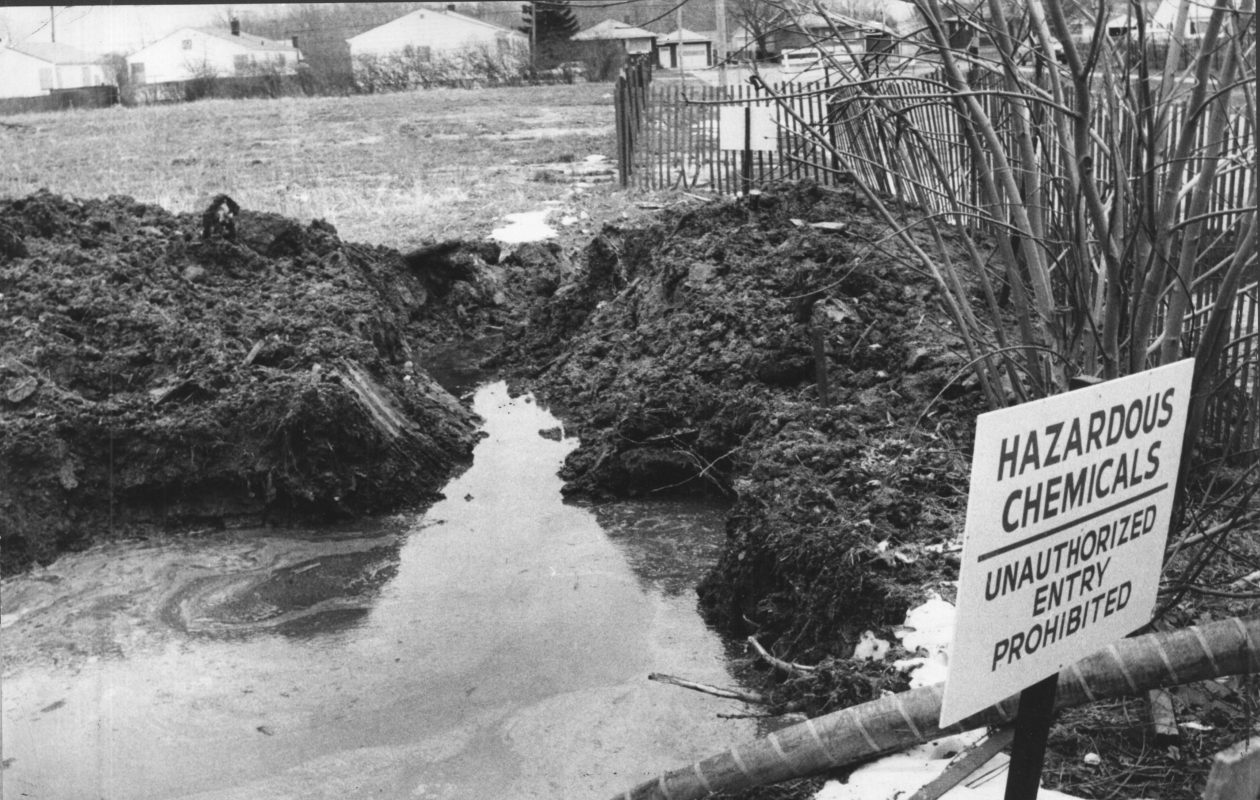The infamous Love Canal disaster which caused significant environmental contamination and health impacts occurred near Niagara Falls in the late 1970s.
This article will examine the history and legacy of Love Canal as one of America’s worst human-made environmental catastrophes.
Understanding such dark chapters is vital to prevent repetition.
Which Environmental Disaster Took Place Near Niagara Falls?

The Love Canal environmental disaster which caused massive toxic contamination and health impacts in the late 1970s originated near Niagara Falls when hazardous chemicals dumped by Hooker Chemical Company leaked from waste drums into the surrounding neighborhood.
Key Points
- Hooker Chemical Company dumped 21,000 tons of toxins at Love Canal from the 1940s to 1950s.
- Toxic chemical waste surfaced in backyards and basements, causing a public health crisis.
- Love Canal contamination forced the government relocation of hundreds of families.
When Did The Love Canal Disaster Take Place?
The Love Canal tragedy originated in the 1940s but escalated in the late 1970s when toxic chemical waste surfacing in backyards and basements created a state of emergency near Niagara Falls.
This sparked activism and awareness.
Who Was Responsible for The Love Canal Disaster?
The disaster traces to the hazardous dumping of industrial chemical waste in the Love Canal neighborhood by the Hooker Chemical Company in the 1940s and 1950s before its sale to the Niagara Falls school board.
What Chemicals Were Dumped at Love Canal?

Extremely high volumes of toxic chlorinated hydrocarbons including dioxins, pesticides, solvents, and caustic soda were dumped at the Love Canal site, eventually totaling over 20,000 tons.
How Did The Chemicals Impact Love Canal Residents?
As chemicals leached from deteriorating waste drums, residents faced soaring rates of infectious disease, cancer, birth defects, and other health crises from exposure and contamination.
How Was The Surrounding Environment Affected?
Leaking toxins polluted groundwater, soil, creeks, and surrounding areas, decimating vegetation and wildlife.
High chemical concentrations remain present decades later preventing habitation.
Could A Similar Disaster Happen Again Today?
Improved regulation helps but lax enforcement and pressures from corporations seeking to cut costs continue to threaten communities with toxic exposure from mismanagement.
Vigilance is essential.
What Was The Outcome of The Love Canal Disaster?
After protests and national media coverage, Love Canal was declared a federal emergency in 1978.
Hundreds of families received relocation support.
The disaster led to critical environmental protection policies.
Why Is Love Canal Significant?
The Love Canal environmental disaster holds immense significance as it brought national attention to the consequences of reckless toxic waste dumping practices and mobilized the environmental justice movement.
Though not the first incidence of hazardous waste mismanagement, Love Canal’s scale and devastating health impacts on residents catalyzed public awareness and calls for accountability.
The disaster also prompted major policy change, with New York State passing the nation’s first Superfund law just two months after Love Canal was declared a federal emergency.
This laid the groundwork for the federal Superfund program and other critical environmental regulations to better protect public health.
Love Canal also highlighted environmental racism and spurred ongoing advocacy against disadvantaged communities bearing disproportionate environmental burdens.
The tragedy altered national awareness and mobilized citizens to demand justice and responsibility surrounding chemical hazards.
Where Is Love Canal Located?
Love Canal was located in a neighborhood in Niagara Falls, NY situated near the Niagara River just east of the famous waterfalls.
The neighborhood was originally a planned model community started in the 1890s but was later repurposed in the 1940s as a hazardous waste dumpsite by Hooker Chemical Company.
After filling with thousands of tons of toxins over two decades, the land was covered and sold for development as a lower-income neighborhood in the 1950s.
This shocking sequence of events led to public health and environmental catastrophe as chemicals leaked into homes, soil, and waterways.
What Pollutants Were Released In Love Canal?
The Love Canal site contained a staggering mix of toxic industrial chemicals that eventually leaked into the neighborhood’s soil and water systems.
Most notoriously, there were high levels of dioxin, a potent carcinogen.
Additionally, the dumpsite included pesticide residues, chlorobenzenes, chlorinated hydrocarbons like DDT, and caustic soda. R
esearchers have identified over 200 distinct chemicals present even decades later due to their slow breakdown.
The extreme volume and variety of hazardous substances make Love Canal unprecedented in terms of human-caused environmental disasters at the time.
Conclusion
The tragic legacy of Love Canal stands as a reminder that proper hazardous waste disposal practices are vital to prevent catastrophic damage to health, ecology, and communities. We must conscientiously safeguard our shared environment.
FAQ
What Was The Long-Term Fallout Of The Disaster?
Love Canal contamination remains today with high toxin concentrations in soil and water. The area is still uninhabitable demonstrating the long-term consequences of such disasters.
How Could The Disaster Have Been Avoided?
Proper disposal of hazardous waste in designated secure landfills, ongoing maintenance, and refraining from selling contaminated land could have prevented the tragedy.
What Lessons Does Love Canal Teach?
Love Canal led to stronger regulations like Superfund and hazardous waste oversight to improve environmental safety, demonstrating the power of activism. But constant vigilance is still essential.
At GreenChiCafe, we are passionate about our beautiful planet and protecting the natural world around us.
Please visit our website to learn more about important environmental topics.
